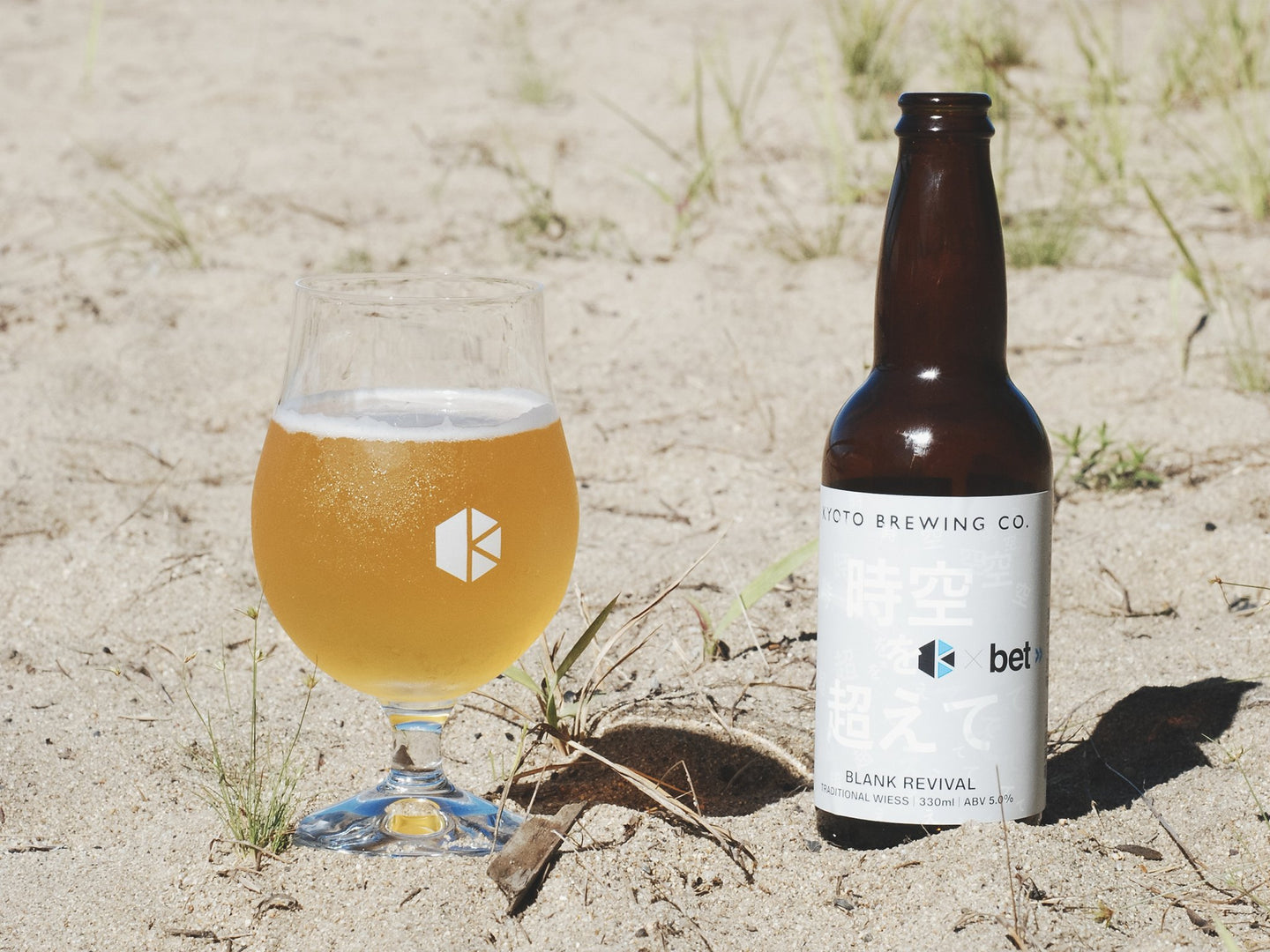Blank Revival, our collaboration brewed with BET, one of Japan’s leading brewing equipment and ingredient companies, has been unique in many ways.
First, the style we chose to brew is so traditional, it has been somewhat lost to the pages of brewing history. When people think of beer in Cologne, Germany, they most certainly think of the Kolsch style to which the city lends its name. Before Kolsch became the norm though, a version brewed with a small amount of wheat malt called a Wiess (not Weiss) was what filled everyone’s glasses. While not commonly brewed anymore in Cologne, records and examples that exist focus on the light and refreshing character that the wheat adds to the brew while retaining the crisp nature of the Kolsch brews that eventually replaced it. And to be clear, Wiess should not be confused with Weiss, a style that typifies southern Germany which uses at least 50% wheat and a yeast strain that produces heavily fruity and phenolic aromas and flavours.

Second, the methods we used to brew the beer were as traditional as the style itself — or at least as close as we could come at our brewery. This was a learning experience and focused just as much on the ingredients as on the equipment and process. The ingredients are 100% German, with the grain being a combination of Pilsner and Wheat with a little bit of acid malt to control the mash pH. Hops are 100% Spalter, trademarked in 1538 and one of the world’s oldest cultivated varieties. The yeast is a special strain from “The Vault” of White Labs, propagated on special request for this brew. We even went as far as to recreate the water profile of Cologne right here in Kyoto.
We extended this tradition to how we brewed the beer as well, most notably through our first attempt at naturally carbonated beer. In most modern breweries, carbonating using tanks of CO2 is preferred over the finicky process of natural carbonation as the latter can be difficult to control, time, and avoid off flavours being trapped in the beer. While our equipment limited us from being able to carbonate using only CO2 that was created during fermentation, we were quite pleased with how close we got and how the quality of aroma was increased. Finally, in an attempt to recreate the old copper kettles used in brewing in Germany, we added copper pipes to the brew kettle during the boil.

So what did all this come together to create? Well, in addition to hopefully recreating a little part of history that you may not have a chance to try anywhere else, it made a downright delicious beer. While it may not have the flair of an Imperial Stout or NEIPA, every aspect of this beer is in perfect harmony and creates a unique complexity that can only come through simplicity. The yeast drives the flavour and aroma and accents the sweetness of the malt and the spicy character of the hops. There is just enough bitterness to keep the sweetness in check, and the hops work with the yeast to create an almost lager-like smooth finish.
If you can’t tell, we are really excited about this beer and sharing its history with all of you. Kanpai!
Please note that the beer can be purchased here

